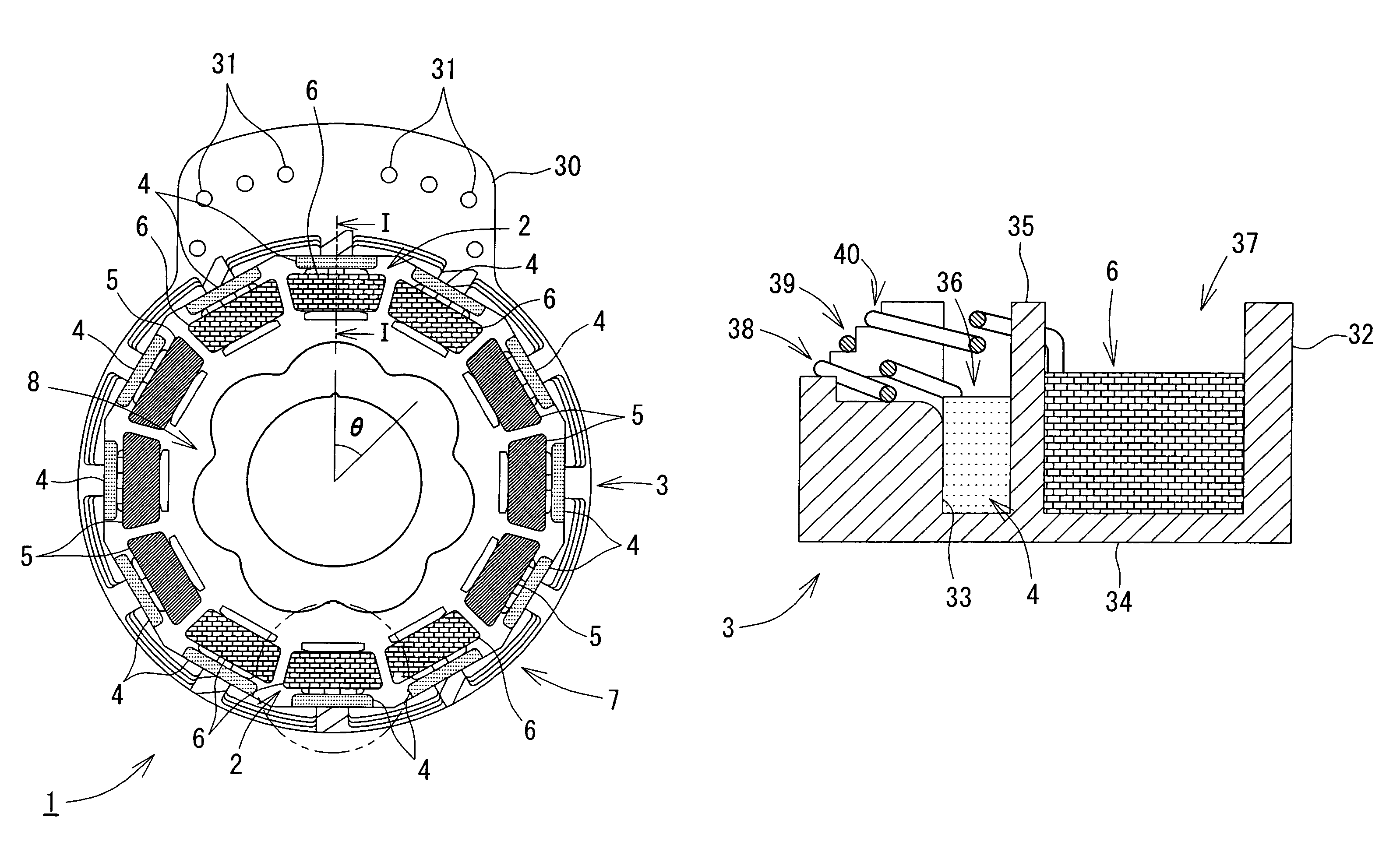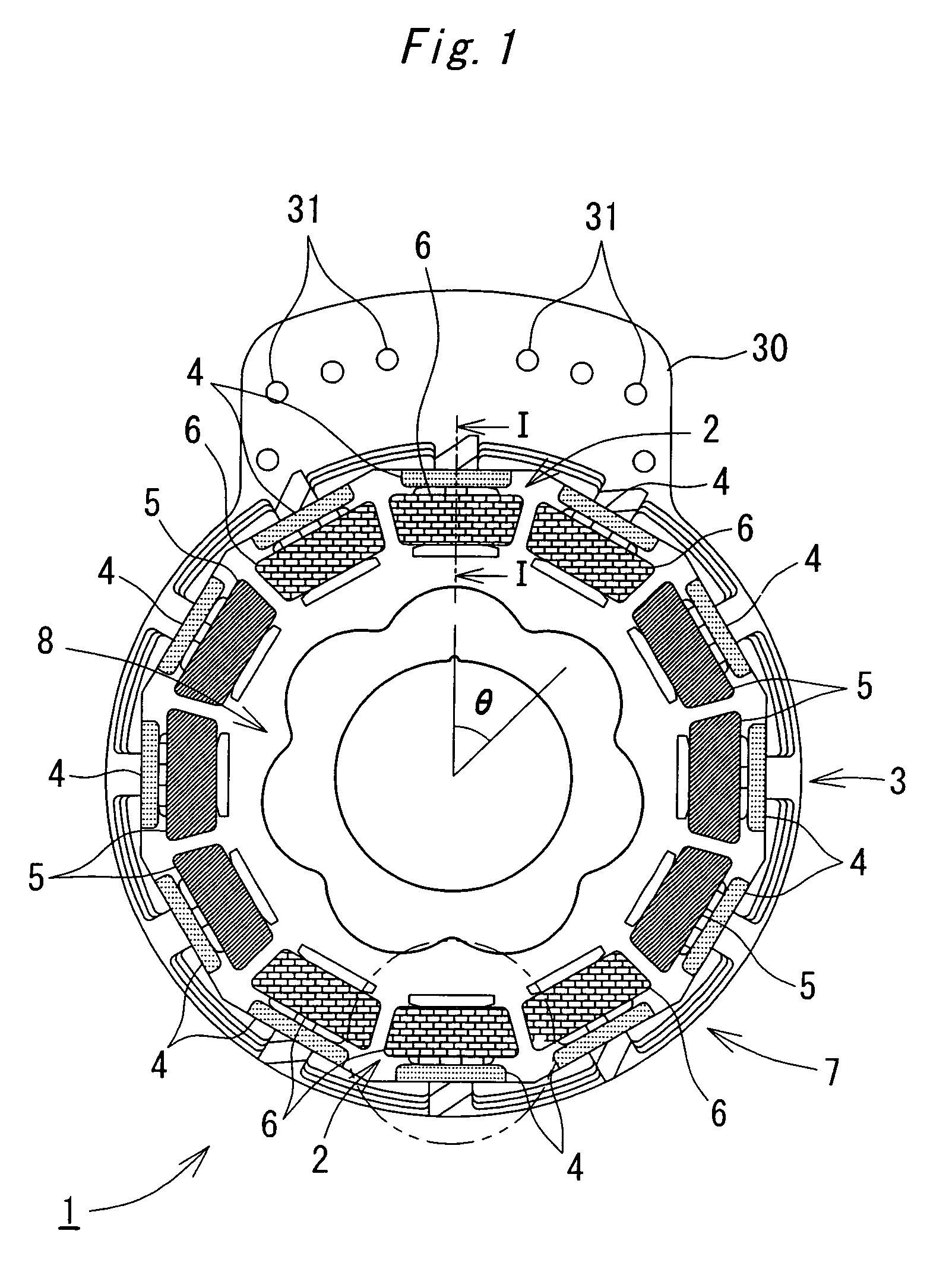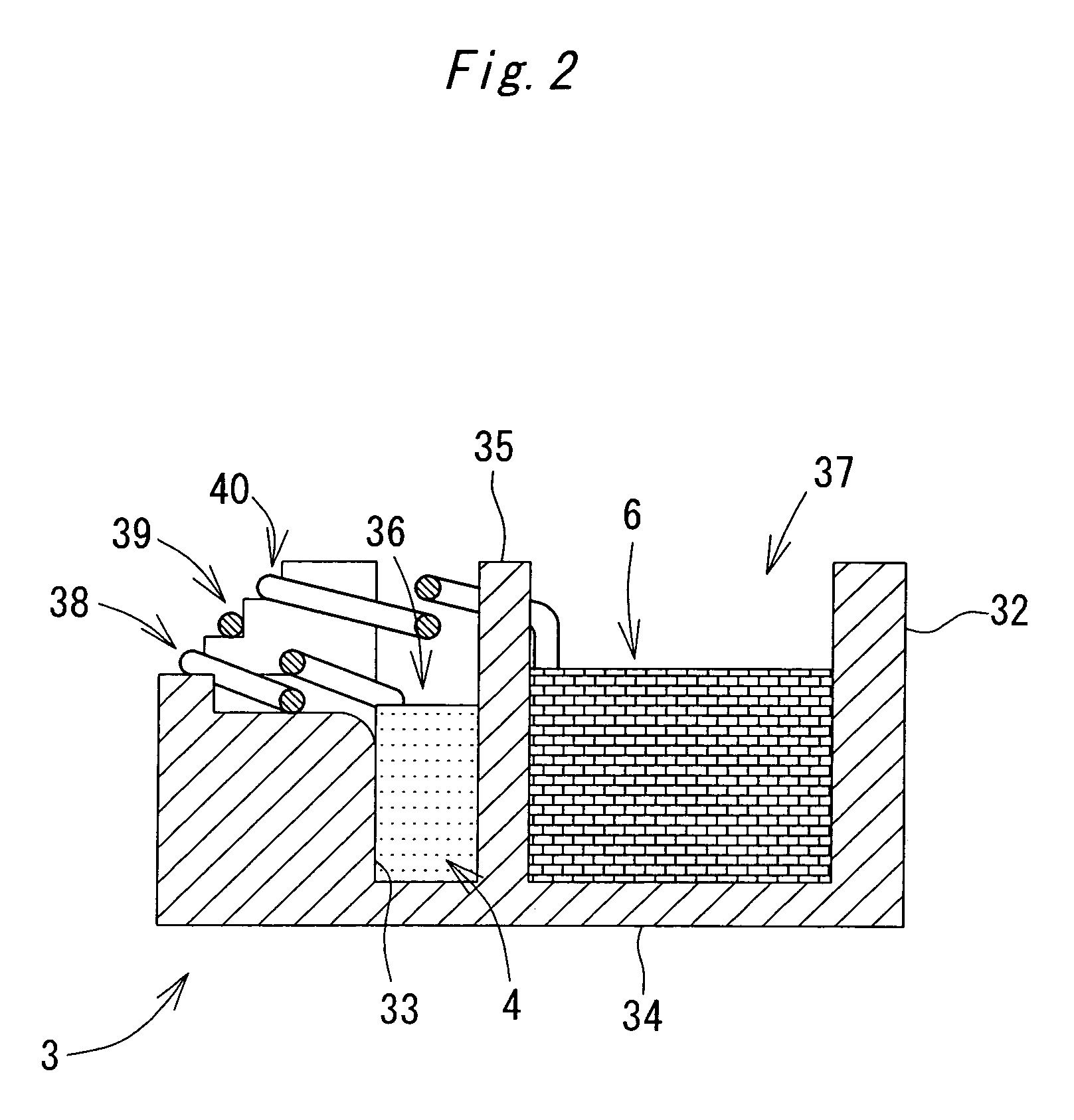Variable reluctance type angle detector
a variable reluctance type and detector technology, applied in the direction of instruments, windings, dynamo-electric components, etc., can solve the problems of insufficient insulation, reduced product yield, increased probability of occurrence of insufficient insulation, etc., and achieve enhanced reliability of the insulation of the variable reluctance type angle detector.
- Summary
- Abstract
- Description
- Claims
- Application Information
AI Technical Summary
Benefits of technology
Problems solved by technology
Method used
Image
Examples
Embodiment Construction
[0024]Hereinafter, this invention will be described in detail with reference to the drawings and based on preferred embodiments.
[0025]Shown in FIG. 1 is a main structure of a variable reluctance type angle detector 1 according to one embodiment of this invention. As shown in FIG. 1, the variable reluctance type angle detector 1 is provided with a stator 7 and a rotor 8 disposed rotatably at the center of the stator 7. The stator 7 has twelve tooth members 2 disposed in a circle and projected inward. Insulating coating by an end insulator 3 is provided on the tooth members 2. An excitation wire 4 and output wires 5 and 6 are wound from the outside of the end insulator 3.
[0026]As shown in FIG. 1, an overall outer shape of the stator 7 is substantially in the form of a ring. The twelve tooth members 2 project radially inward from an inner periphery of the stator 7. The stator 7 has a stator core and the end insulator 3. The stator core is formed by pressing a steel plate having a prede...
PUM
 Login to view more
Login to view more Abstract
Description
Claims
Application Information
 Login to view more
Login to view more - R&D Engineer
- R&D Manager
- IP Professional
- Industry Leading Data Capabilities
- Powerful AI technology
- Patent DNA Extraction
Browse by: Latest US Patents, China's latest patents, Technical Efficacy Thesaurus, Application Domain, Technology Topic.
© 2024 PatSnap. All rights reserved.Legal|Privacy policy|Modern Slavery Act Transparency Statement|Sitemap



